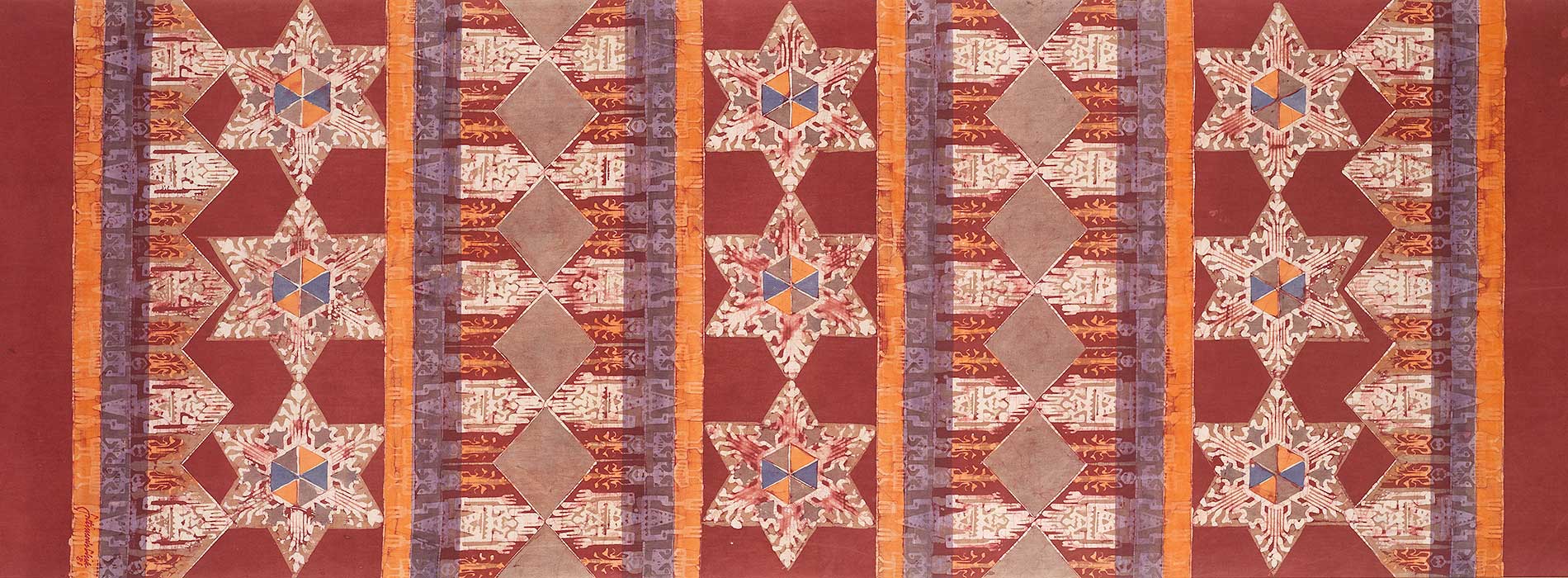TEXTILE SYMPOSIUM:
Trade, Ties & Transformations
PROGRAMMES / TEXTILE SYMPOSIUM
Trade, Ties & Transformations
Held in conjunction with ILHAM Gallery’s survey exhibition Love Me in My Batik: Modern Batik Art from Malaysia and Beyond. The one-day symposium explores the changes in values and meanings in what we recognise as a ‘traditional’ craft of a particular culture when certain technological, social and cultural changes occur.
Broadening the scope of the exhibition, the symposium brings together a panel of speakers to examine how meanings, patterns of circulation and artistic forms in batik and other textile traditions of Southeast Asia have been transformed since from the late nineteenth century.
In what ways can textile be fashioned into national cultural propaganda? In what instances do they move beyond the borders of the nation and inspire artistic cultures elsewhere? How do textile-makers find the balance between our present day way of thinking and the continuance of a traditional knowledge system from which the textiles originally emerged?
Leading textile experts from India, Thailand, Australia and Malaysia, working in different areas of studies from art history to heritage to anthropology, will meet in Kuala Lumpur to discuss the historical, cultural and spiritual significance of textiles in the region and beyond.
SCHEDULE
10.00 Registration
10.30 Opening Remarks (by convenors Rahel Joseph and Simon Soon)
11.00 Tagore and Batik
Supriya Roy, Tagore Scholar from Kolkata, India gives us an account of Rabindranath Tagore’s encounter with Javanese batik and the subsequent spread of modern batik textile in India. During Rabindranath Tagore’s 1927 visit to Java and Bali, he recognised a Hindu culture that was perceived to have derived from India’s ancient civilisation. At the same time, Tagore and his companions were presented with many batik textiles, which forms the collection of the Nandan Museum today. These very textiles inspired the art of batik in Santiketan, where it became the centre of a revival of a modern batik textile tradition that spread all over India.
12.00 Translation and Translocation: Javanese Batik in Europe and Africa
Maria Wronska-Friend (Senior Research Fellow, James Cook University, Queensland, Australia) presents a fascinating story of how Javanese batik textiles have become, from the end of the nineteenth century, an important source of inspiration for artists, designers and textile producers outside Indonesia, especially in Europe and Africa. In particular, the technique and aesthetics of Javanese batik left a significant impact in the Art Nouveau and Art Deco movements of the Netherlands. Her research considers how a traditional craft form takes on a different life across two continents, inspiring new textile designs in Africa as well as inspired the works of modernists artists who have never practised batik, such as Henri Matisse, Charles Rennie Mackintosh, and Henry van de Velde.
13.00 Lunch Break
14.30 Fashioning the Nation: Fashionability, Female Cultural Agency and Thainess at the Queen Sirikit Museum of Textiles
Eksuda Singhalampong (Lecturer, Department of Art History, Silpakorn University, Bangkok, Thailand) discusses Queen Sirikit of Thailand’s contribution to the construction of a Thai cultural identity through her invention of a national dress for women. This was in part achieved to reassert the Royal image and power within the Thai public consciousness following the revolution of 1932 that brought an end to absolute monarchy. In a sense, Queen Sirikit’s cultural project could be seen as a means to establish continuity with a suitable historic past. The project therefore commemorates the Thai monarchy’s dynastic paradigm through cultural patronage and re-centres the royal family within postwar Thai political discourse.
15.30 Textile Tales of Pua Kumbu: A Reflection
Welyne Jefferey Jehom (Senior Lecturer, Gender Studies, University of Malaya) reflects on an exhibition she curated last year titled ‘Textile Tales of Pua Kumbu’ at the University of Malaya Art Gallery. Using video projection, online mapping database and interactive touch screens, the exhibition brings alive the story-telling power of Pua Kumbu, an ikat-based textile tradition of the Iban people of Sarawak. At the exhibition, public of different ages experienced the whole ecosystem of the productions of the Pua Kumbu capturing the different stages of yarn preparations to the selection of natural dyes, weaving activities and the animations of the folklores of selected stories behind the designs and the Pua Kumbu’s motifs. Jehom will also consider the Pua Kumbu motifs in relation to the activity of dreaming, which figure significantly within the indigenous knowledge system of the Iban people.
16.30 Tea Break
16.45 Panel Discussion
17.45 Session ends to be followed by a specially commissioned outdoor site specific contemporary dance performance created by choreographer Joseph Gonzales and the dancers of Akademi Seni Kebangsaan (ASWARA) in response to ILHAM's public sculpture, Breast Stupa Topiary by Thai artist Pinaree Sanpitak.
DATE: 14 MAY 2016
TIME: 10.00AM – 7.30PM
VENUE: LEVEL 5, GALLERY
2015-2025 © ILHAM GALLERY. ALL RIGHTS RESERVED. WEB DESIGN BY TOMMY NG


